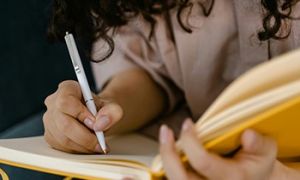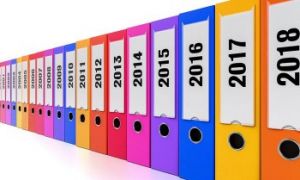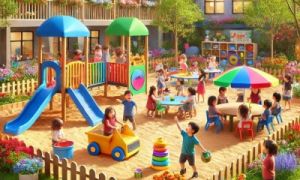"My Family" theme is an engaging and meaningful way to help toddlers and preschoolers learn about family structures, relationships, and the importance of family bonds. The following article provides information on My Family Themed Activity Ideas, Family Theme Children's Books, Importance Of My Family Theme, Goals For My Family Theme, Linking To The EYLF and more.
My Family-Themed Activity Ideas
1. Family Tree Craft
-
Materials: Construction paper, markers, glue, family photos or drawings.
-
1Activity: Help children create a simple family tree. They can draw or paste pictures of their family members on the branches and learn about family relationships.
2. Family Portraits
-
Materials: Drawing paper, crayons, markers, colored pencils.
-
Activity: Encourage children to draw portraits of their family members. This helps them express their understanding of their family and enhances their fine motor skills.
3. Family Role Play
-
Materials: Dress-up clothes, props like hats, bags, and toy phones.
-
Activity: Set up a role-play area where children can pretend to be different family members. They can act out daily routines and family activities, fostering social and emotional development.
4. Family Story Time
-
Materials: Storybooks about families, comfortable seating.
-
Activity: Read books about families to the children. Discuss the different types of families and the roles each family member plays. Encourage children to share stories about their own families.
5. Family Collage
-
Materials: Magazines, scissors, glue, large paper.
-
Activity: Provide magazines and ask children to cut out pictures that remind them of their family. They can create a collage and talk about why they chose each picture.
6. Family Song and Dance
-
Materials: Musical instruments (optional), music player.
-
Activity: Sing songs about families and encourage children to dance along. Songs like "Finger Family" and "We Are Family" are great choices. You can also make up your own family-themed songs.
7. Family Cooking Day
-
Materials: Simple recipes, ingredients, child-safe cooking utensils.
-
Activity: Organize a cooking activity where children can help prepare a simple meal or snack. They can learn about family traditions and the importance of working together.
8. Family Handprint Art
-
Materials: Non-toxic paint, large paper.
-
Activity: Have children dip their hands in paint and make handprints on a large piece of paper. Each family member can add their handprint to create a collaborative piece of art.
9. Family Photo Album
-
Materials: Small photo albums, family photos, stickers, markers.
-
Activity: Help children create a photo album of their family. They can decorate the pages with stickers and drawings, and use the album to share stories about their family members.
10. Family Traditions Discussion
-
Materials: None
-
Activity: Have a circle time discussion where children can share their family traditions. This helps them learn about diversity and respect for different family cultures.
11. Family Mobile
-
Materials: Hangers, string, family photos, paper, markers, glue.
-
Activity: Help children create a mobile with pictures of their family members. They can decorate the photos and hang them from a hanger using string.
12. Family House Craft
-
Materials: Cardboard boxes, construction paper, markers, glue, stickers.
-
Activity: Let children create a model of their house using cardboard boxes and other craft supplies. They can decorate it to look like their own home.
13. Family Recipe Sharing
-
Materials: Recipe cards, markers, cooking ingredients.
-
Activity: Ask parents to share simple family recipes. Cook these recipes with the children and talk about family traditions and favorite foods.
14. Family Songs and Rhymes
-
Materials: Music player, lyrics sheets.
-
Activity: Sing songs and rhymes about families. Encourage children to create their own family-themed songs and perform them for the class.
15. Family Calendar
-
Materials: Large paper, markers, stickers.
-
Activity: Create a family calendar where each child can mark important family events or celebrations. They can also add drawings or stickers to represent each event.
16. Family Memory Game
-
Materials: Family photos, index cards, markers.
-
Activity: Create a memory game using photos of the children's family members. Place the photos on index cards and let children match the pairs.
17. Family Story Stones
-
Materials: Smooth stones, paint, markers.
-
Activity: Paint or draw pictures of family members on stones. Children can use these story stones to tell stories about their families.
18. Family Puppets
-
Materials: Socks or paper bags, craft supplies (yarn, buttons, markers).
-
Activity: Make puppets representing family members using socks or paper bags. Children can use these puppets to act out family routines and interactions.
19. Family Traditions Chart
-
Materials: Large paper, markers, stickers.
-
Activity: Create a chart where children can share their family traditions. They can draw or use stickers to represent each tradition.
20. Family Walk
-
Materials: None
-
Activity: Organize a family walk where parents and children can explore the neighborhood together. This helps build community and family bonds.
21. Family Quilt
-
Materials: Fabric squares, fabric markers, needle and thread (optional).
-
Activity: Have each child decorate a fabric square with drawings or patterns representing their family. Sew the squares together to create a classroom family quilt.
22. Family Tree Wall Display
-
Materials: Construction paper, markers, glue, family photos.
-
Activity: Create a large family tree wall display where each child can add their family members' pictures and names.
23. Family Quilt
-
Materials: Fabric squares, fabric markers, glue, needle and thread (optional).
-
Activity: Have each child decorate a fabric square with drawings or patterns that represent their family. Sew or glue the squares together to create a collaborative family quilt.
24. Family Role-Play Stations
-
Materials: Costumes, props, toy kitchen, doctor kits.
-
Activity: Set up different role-play stations (e.g., home, doctor's office, grocery store) where children can act out family roles and scenarios. This helps them understand family dynamics and develop social skills.
25. Family Photo Frames
-
Materials: Craft sticks, glue, markers, family photos.
-
Activity: Have children create photo frames using craft sticks and decorate them. They can add a family photo to the frame and take it home as a keepsake.
26. Family Rhymes and Songs
-
Materials: Music player, lyrics sheets.
-
Activity: Sing songs and recite rhymes about families. Encourage children to create their own family-themed songs and share them with the group.
27. Family Memory Books
-
Materials: Blank books, markers, stickers, photos.
-
Activity: Help children create a memory book filled with drawings, photos, and notes about their family. This can be an ongoing project where they add new memories over time.
28. Family Puppets
-
Materials: Paper bags, socks, markers, yarn, craft supplies.
-
Activity: Create puppets representing different family members using paper bags or socks. Children can use these puppets to act out family stories and routines.
29. Family Fingerprints
-
Materials: Ink pads, paper, markers.
-
Activity: Have children make fingerprints on a piece of paper and turn them into characters representing their family members. They can draw faces and add details to each fingerprint.
30. Family Storytime with Grandparents
-
Materials: None
-
Activity: Invite grandparents to come in and share stories about their childhood and family traditions. This provides a wonderful opportunity for intergenerational learning.
31. Family Games Day
-
Materials: Board games, puzzles, outdoor games.
-
Activity: Organize a family games day where children can play games that families might enjoy together. This promotes teamwork and social interaction.
32. Family Tree Mural
-
Materials: Large paper, markers, family photos or drawings.
-
Activity: Create a large mural of a tree on a wall or bulletin board. Each child can add leaves with pictures or drawings of their family members to the tree.
33. Family Recipe Book
-
Materials: Blank book, markers, photos, family recipes.
-
Activity: Ask parents to share simple family recipes. Compile these into a recipe book that children can decorate and take home.
34. Family Pet Stories
-
Materials: Drawing paper, crayons, markers.
-
Activity: Have children draw pictures of their family pets and share stories about them. This helps children express their love for their pets and learn about others' pets.
35. Family Dance Party
-
Materials: Music player, playlist of family-friendly songs.
-
Activity: Host a family dance party where children can dance to their favorite songs with their friends. This promotes physical activity and fun.
36. Family-Themed Sensory Bins
-
Materials: Bins, rice, sand, small family-related toys or items.
-
Activity: Create sensory bins filled with materials like rice or sand and include small toys or items related to family (e.g., miniature houses, figures). Children can explore and play while learning about family concepts.
37. Family Talent Show
-
Materials: Costumes, props, music.
-
Activity
38. Family Music Band
-
Materials: Musical instruments (homemade or real), costumes.
-
Activity: Encourage children to form a "family band" and make music together. They can use instruments like shakers, drums, and tambourines. This activity promotes teamwork and rhythm skills.
39. Family Dress-Up Day
-
Materials: Dress-up clothes, accessories.
-
Activity: Organize a family dress-up day where children come dressed as different family members or wear clothes representing their family's culture and traditions.
40. Family Shadow Box
-
Materials: Shoeboxes, craft supplies, family photos.
-
Activity: Create a shadow box diorama depicting a scene from the child's family life. They can use photos, drawings, and small toys to bring the scene to life.
41. Family Bingo
-
Materials: Bingo cards, markers, family-related pictures.
-
Activity: Create bingo cards with pictures related to family members and activities. Play a game of bingo and discuss each picture as it is called out.
42. Family Journal
-
Materials: Notebooks, markers, stickers.
-
Activity: Provide each child with a journal to document their family experiences. They can draw pictures, write stories, and add photos to their journal.
43. Family Puzzle
-
Materials: Large pictures of family members, scissors, glue.
-
Activity: Create a large picture puzzle by cutting a family photo into pieces. Children can work together to assemble the puzzle.
44. Family Cooking Class
-
Materials: Simple recipes, ingredients, cooking utensils.
-
Activity: Host a family cooking class where children can help prepare a simple dish. Discuss the importance of family meals and cooking together.
45. Family Story Box
-
Materials: Shoebox, craft supplies, family photos.
-
Activity: Create a story box filled with items representing different family stories. Children can use the items to tell their own family stories.
46. Family Art Gallery
-
Materials: Art supplies, frames, display board.
-
Activity: Have children create artwork representing their families. Display the art in a "family gallery" for parents and children to admire.
47. Family Board Game
-
Materials: Board game template, markers, family-related images.
-
Activity: Create a custom board game with family-related challenges and activities. Children can play the game and learn about family roles and responsibilities.
48. Family Scent Exploration
-
Materials: Scented items (flowers, spices, fruits), blindfolds.
-
Activity: Explore different scents that remind children of their family or home. Discuss the memories and feelings associated with each scent.
49. Family Dance Routine
-
Materials: Music, space for dancing.
-
Activity: Choreograph a simple dance routine that children can perform together. They can practice and then showcase their routine to their families.
50. Family Time Capsule
-
Materials: Box, family-related items, paper, markers.
-
Activity: Create a family time capsule by filling a box with items that represent the children's families. Seal the box and plan to open it in the future to reflect on how their families have grown.
Family Theme Children's Books
Love Makes a Family by Sophie Beer
- A joyful celebration of the many ways families take care of and love one another.
Homemade Love by bell hooks, illustrated by Shane W. Evans
- A poetic board book where a mother and father call their little girl all kinds of silly names to show her how much they love her.
My Two Moms and Me by Michael Joosten, illustrated by Izak Zenou
- Celebrates diverse LGBTQ+ families.
Better Together: A Book of Family by Barbara Joosse and Anneke Lisberg, illustrated by Jared Andrew Schorr
- A lift-the-flap board book showing animal families helping each other out.
Between Us and Abuela by Mitali Perkins, illustrated by Sara Palacios
- A touching story about a family visiting their abuela through the border wall.
Gigi and Ojiji: What's in a Name? by Melissa Iwai
- Gigi wants to find the perfect name for herself, exploring her Japanese heritage.
The Berenstain Bears Share and Share Alike! by Mike Berenstain
- A story about learning to share and the importance of family cooperation.
Families, Families, Families! by Suzanne Lang, illustrated by Max Lang
- A heartwarming book that celebrates the diverse structures of families, showing that what makes a family is the love and bond they share.
The Family Book by Todd Parr
- A colorful and engaging book that highlights the many different types of families, emphasizing that all families are special.
A Family Is a Family Is a Family by Sara O'Leary, illustrated by Qin Leng
- A beautifully illustrated book that shows the diverse and unique families children come from, focusing on the love that binds them together.
Heather Has Two Mommies by Lesléa Newman, illustrated by Laura Cornell
- A classic story about a little girl with two mothers, celebrating diversity and the concept of family in a loving and inclusive way.
Stella Brings the Family by Miriam B. Schiffer, illustrated by Holly Clifton-Brown
- A delightful story about a girl with two dads and how her family navigates Mother's Day in a supportive and loving way.
I Love My Family by Claire Freedman, illustrated by Judi Abbot
- A sweet board book that celebrates the special moments and love within a family.
Mommy, Mama, and Me by Lesléa Newman, illustrated by Carol Thompson
- A charming board book that captures the daily routines and loving moments shared between a toddler and their two moms.
Daddy, Papa, and Me by Lesléa Newman, illustrated by Carol Thompson
- A companion book to "Mommy, Mama, and Me," focusing on a toddler's day with their two dads.
Guess How Much I Love You by Sam McBratney, illustrated by Anita Jeram
- A classic tale of the boundless love between a parent and child, perfect for bedtime reading.
The Wonderful Things You Will Be by Emily Winfield Martin
- A beautifully illustrated book that celebrates the hopes and dreams parents have for their children.
Importance Of My Family Theme
The "My Family" theme is incredibly important for toddlers and preschoolers for several reasons. It plays a crucial role in their overall development and helps foster a strong sense of identity and belonging. Here are some key benefits:
1. Self-Awareness and Identity
-
Understanding Family Relationships: Children learn about family roles and relationships, which helps them understand their place within their family and their community.
-
Personal Identity: This theme allows children to explore and express their unique identity, including their likes, dislikes, and individual characteristics.
2. Emotional Development
-
Emotional Expression: Activities related to the "My Family" theme encourage children to express their emotions and feelings about their family members, enhancing their emotional intelligence.
-
Sense of Belonging: Learning about their family and sharing stories helps children feel connected and valued, fostering a sense of security and belonging.
3. Social Skills
-
Communication: Engaging in discussions and activities about their family helps children improve their communication skills, both verbal and non-verbal.
-
Empathy and Understanding: By learning about different family structures and traditions, children develop empathy and an appreciation for diversity.
4. Cognitive Development
-
Critical Thinking: Activities like creating family trees or drawing family portraits encourage children to think critically and make connections between family members and their roles.
-
Memory Skills: Recalling and sharing information about their family helps enhance children's memory and cognitive abilities.
5. Cultural Awareness
-
Celebrating Diversity: The "My Family" theme promotes inclusivity by celebrating the diverse backgrounds, cultures, and traditions of each child's family.
-
Cultural Appreciation: Children learn to appreciate and respect the cultural practices and traditions of their peers' families.
6. Language Development
-
Vocabulary Building: Talking about family members and relationships helps expand children's vocabulary and language skills.
-
Storytelling: Sharing family stories and experiences encourages children to develop their storytelling abilities and enhances their literacy skills.
7. Confidence and Self-Esteem
-
Positive Self-Image: Engaging in activities that highlight their family and personal experiences boosts children's self-esteem and confidence.
-
Feeling Valued: When children see that their family experiences are important and valued, they feel respected and appreciated.
8. Creativity and Imagination
-
Artistic Expression: Activities like drawing family portraits or creating family collages allow children to express themselves creatively.
-
Role Play: Pretending to be different family members in role-play activities stimulates children's imagination and creativity.
Incorporating the "My Family" theme into your preschool curriculum helps create a supportive and engaging environment that promotes holistic development. It allows children to explore their identity, understand their place within their family and community, and appreciate the diversity of family structures.
Goals For My Family Theme
Focusing on the "My Family" theme for toddlers and preschoolers, you can set several goals that support their overall development. Here are some key objectives you might aim to achieve:
1. Self-Identity and Awareness
-
Recognize Family Members: Help children identify and name their family members and understand their relationships (e.g., mother, father, siblings).
-
Personal Identity: Encourage children to explore and express their own identity, including their likes, dislikes, and unique qualities.
2. Emotional Development
-
Express Emotions: Provide opportunities for children to express their feelings about their family and develop a positive emotional connection with family members.
-
Sense of Belonging: Foster a sense of belonging and security by helping children understand their place within their family.
3. Social Skills
-
Communication: Enhance verbal and non-verbal communication skills by encouraging children to share stories and experiences about their families.
-
Empathy and Respect: Promote empathy and respect by learning about the diversity of family structures and traditions.
4. Cognitive Development
-
Critical Thinking: Engage children in activities that involve thinking about family roles and relationships, fostering critical thinking skills.
-
Memory and Recall: Improve memory skills by recalling and discussing family events and traditions.
5. Cultural Awareness and Diversity
-
Celebrate Diversity: Highlight and celebrate the different types of families and cultural traditions, fostering an appreciation for diversity.
-
Cultural Traditions: Introduce children to various family traditions and practices from different cultures.
6. Language Development
-
Vocabulary Building: Expand children's vocabulary by introducing new words related to family members, roles, and relationships.
-
Storytelling: Encourage storytelling and sharing family stories to develop language and literacy skills.
7. Confidence and Self-Esteem
-
Positive Self-Image: Boost children's self-esteem by celebrating their family and personal experiences.
-
Feeling Valued: Ensure children feel valued and respected by acknowledging their contributions and family stories.
8. Creativity and Imagination
-
Artistic Expression: Provide opportunities for children to express themselves creatively through family-themed art and craft projects.
-
Role Play: Encourage imaginative play by setting up role-play scenarios that reflect family life.
9. Physical Development
-
Fine Motor Skills: Develop fine motor skills through activities like drawing, cutting, and assembling family-related crafts.
-
Gross Motor Skills: Promote physical activity with games and outdoor activities that involve family themes.
10. Problem-Solving and Decision Making
-
Decision Making: Allow children to make choices in activities, fostering decision-making skills.
-
Problem-Solving: Engage children in problem-solving tasks related to family scenarios, enhancing their cognitive development.
Linking To The EYLF
The "My Family" theme is a wonderful way to help children explore their family roles, relationships, and cultural backgrounds. Linking this theme to the Early Years Learning Framework (EYLF) can enhance children's learning and development in several ways:
Outcome 1: Children have a strong sense of identity
- Activities: Creating family trees, sharing family stories, and making family portraits can help children understand their own identity and the uniqueness of their family.
- Benefits: Builds self-awareness and a sense of belonging.
Outcome 2: Children are connected with and contribute to their world
- Activities: Inviting family members to share their traditions, foods, or languages can help children feel connected to their community and appreciate diversity.
- Benefits: Encourages social connections and cultural awareness.
Outcome 3: Children have a strong sense of wellbeing
- Activities: Discussing family roles and responsibilities, and how family members support each other can promote emotional wellbeing.
- Benefits: Enhances children's understanding of relationships and emotional support.
Outcome 4: Children are confident and involved learners
- Activities: Encouraging children to ask questions about their family history and traditions fosters curiosity and active learning.
- Benefits: Builds confidence and a love for learning.
Outcome 5: Children are effective communicators
- Activities: Storytelling sessions where children share family stories or create family-themed plays can improve communication skills.
- Benefits: Enhances verbal and non-verbal communication skills.
Further Reading
My Family
My Family Adventure
My Family Tree
Family Poppy Wreath
Engaging Families In Early Childhood Education
Strategies To Include Family Input In Early Childhood Services


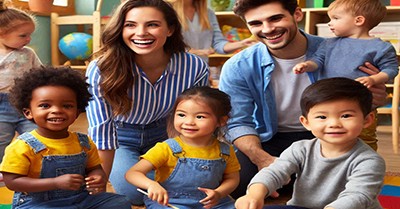
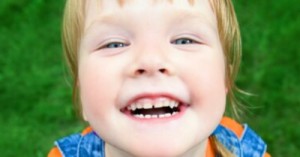


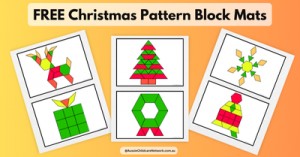
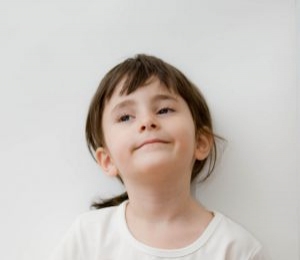 Open ended questions cannot be responded to with one word answers such as yes or no. These types of questions enables a child to provide
Open ended questions cannot be responded to with one word answers such as yes or no. These types of questions enables a child to provide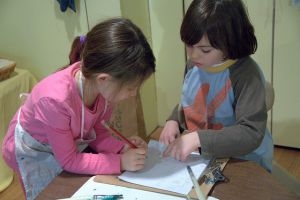 During your child’s preschool years, an important milestone begins to emerge. This is the development of pre-writing skills. Pre-writing skills are used to encourage, develop
During your child’s preschool years, an important milestone begins to emerge. This is the development of pre-writing skills. Pre-writing skills are used to encourage, develop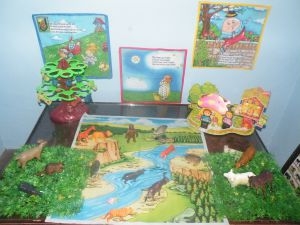 Open ended materials enables children to play freely. They are objects that have no rules to follow, use or function. Raw materials that can be
Open ended materials enables children to play freely. They are objects that have no rules to follow, use or function. Raw materials that can be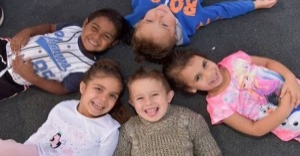 An Acknowledgment of the Country is a way of showing respect for the Traditional Owners and can be given by both non-Indigenous people and Aboriginal
An Acknowledgment of the Country is a way of showing respect for the Traditional Owners and can be given by both non-Indigenous people and Aboriginal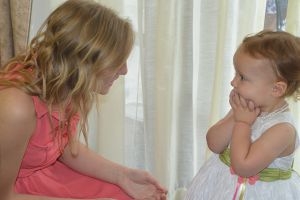 Language plays an important role in a child’s development. It enables a child to communicate effectively with their family, learn at school, socialize with friends,
Language plays an important role in a child’s development. It enables a child to communicate effectively with their family, learn at school, socialize with friends,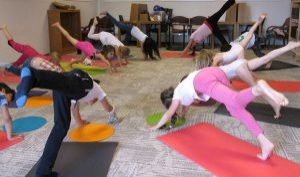 Like adults, children have to deal with their own stress in life. Moving house, starting a new school, preparing for a new sibling - these are
Like adults, children have to deal with their own stress in life. Moving house, starting a new school, preparing for a new sibling - these are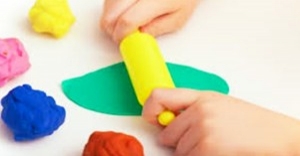 Playdough is such a versatile material. It provides numerous benefits to children as they manipulate it, it is safe and soothing and provides children with
Playdough is such a versatile material. It provides numerous benefits to children as they manipulate it, it is safe and soothing and provides children with Teaching children about sustainability enables them to appreciate and respect the natural environment. Early childhood services can provide meaningful hand on learning experiences in order
Teaching children about sustainability enables them to appreciate and respect the natural environment. Early childhood services can provide meaningful hand on learning experiences in order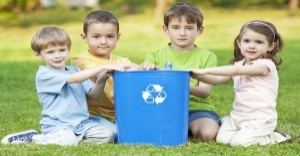 Recycling is an important concept that teaches children to care for the environment. It encourages children to be responsible and show a growing appreciating for
Recycling is an important concept that teaches children to care for the environment. It encourages children to be responsible and show a growing appreciating for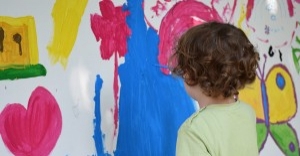 When children apply paint to paper, glue things together, or pound a lump of clay, they experiment with colour, shape design and texture.
When children apply paint to paper, glue things together, or pound a lump of clay, they experiment with colour, shape design and texture.
